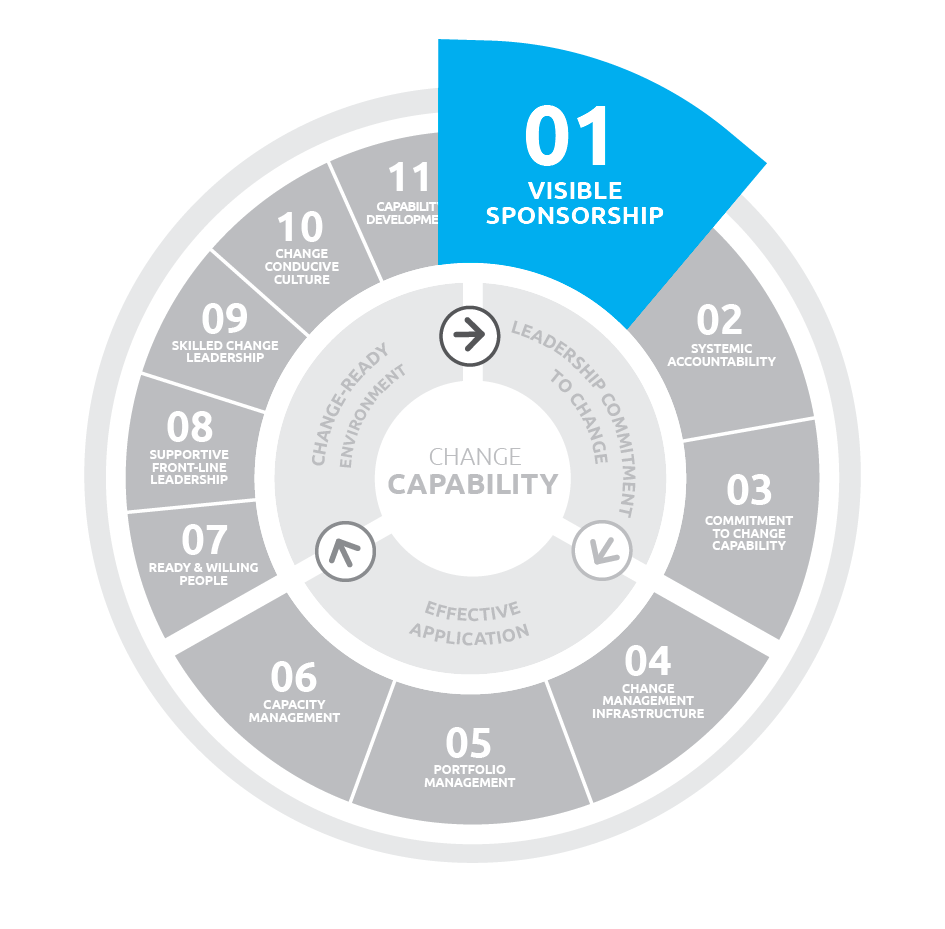Every organisation seeking to implement major change must manage three key components, or risk areas, in the organisational change system:
- Organisational capacity for change
- Change demand risks
- Initiative-specific risks
This article explores the impact of the first two – demand and capacity – on an organisation’s ability to implement their change initiatives.
1. Organisational capacity for change
Organisational capacity for change is a combination of people-based factors that influence an organisation’s overall ability to adapt. It includes legacy, capability, context, personal adaptability, drive, and effective change leadership.
| Component | Desired outcome |
| Organisational Capacity | The organisation has the ‘building blocks’ in place to enable widespread adaptation or transformation of people’s behaviour.People can approach a portfolio of major change projects with confidence. |
Organisations with a greater capacity for change will find it easier to successfully implement transformational change or simultaneous changes.
Unfortunately, it’s not unusual for organisational capacity for change to be consumed by low criticality initiatives, leaving little capacity available for mission-critical, transformative change.
Does this feel like your organisation? “Let’s build an app to help our people get to know the new office; our high-value customers need custom reports; we need to improve how our sales and service divisions work together; let’s change our culture too!”
Interestingly, many organisations have a robust process to secure funding for its initiatives, but they fail to investigate if there is sufficient organisational capacity to implement these changes successfully.
Organisational capacity is just as important to success as project funding.
When planning change, organisations must assess the capacity available in the context of all other changes being undertaken and the whirlwind of business-as-usual (BAU).
Failure to do this will almost assuredly result in failure to implement successfully.
2. Change demand risks
Change demand represents the impact of change initiatives in consuming time, resources, and energy to achieve their objectives.
It considers the amount or complexity of change, speed, alignment, cost of failure, and personal implications.
| Component | Desired outcome |
| Change Demand | The organisation has a process in place to ensure that people are working on the most critical business changes and can respond to make capacity available for important new challenges that arise.People feel stretched but view the challenge positively, rather than feeling overloaded and overwhelmed. |
Change capacity and change demand are often mismatched (or mismanaged)
We often see that an organisation’s demand for change is greater than the capacity available.
This results in change overload, which can have devastating consequences:
- Changes are announced but little effort is put into implementation
- Change slows down
- Performance deteriorates
- Leaders have difficulty gaining commitment to new changes
- If change is achieved, it’s through command-and-control tactics (“you will do this!”)
Change overload can paralyse an organisation, stifling its chances for successful implementation and making it a poor competitor in the marketplace.
How we help
We recommend an approach that builds capacity while managing change demand simultaneously.
This ensures you’re increasing your ability to implement change successfully and devoting precious human capacity to initiatives that are strategically important.
It’s a fine balancing act that you must win to be competitive today.
To see how your organisation stacks up, take our free change capability scan.



